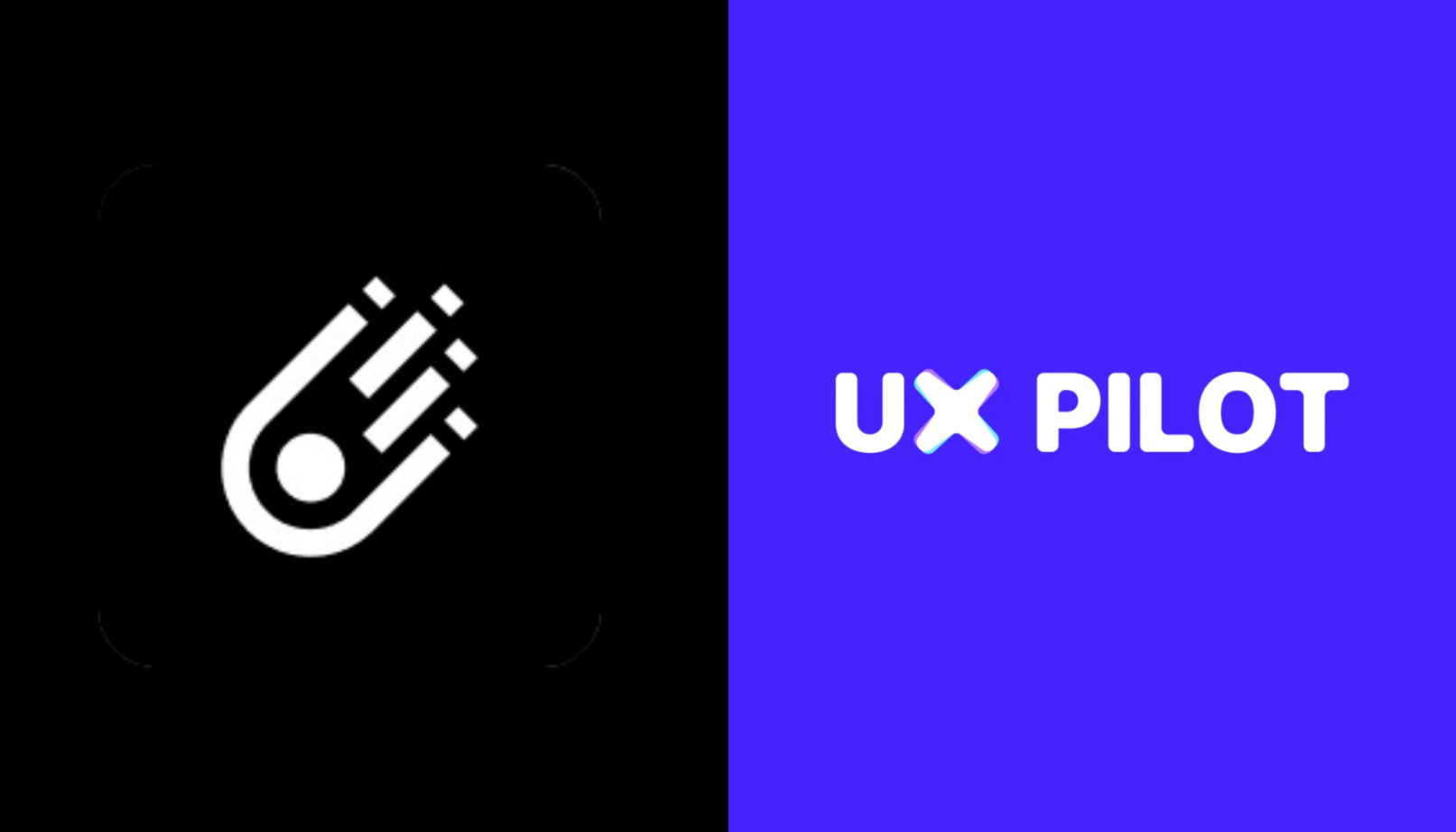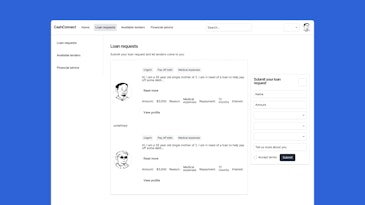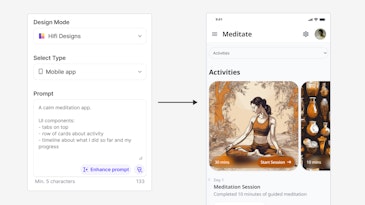Are you still doubting if artificial intelligence is the key to unlocking the next level of innovation in UX design?
Without any doubt, the coming of artificial intelligence (AI) tools is changing UX design traditional workflow, introducing efficiencies and innovations that were once thought impossible. Among these tools available to UX designers, Galileo AI and UX Pilot stand out, each offering unique contributions to the design process.
Galileo AI, a seasoned player in the market, and UX Pilot, an emerging contender, exemplify the potential of AI to not only accelerate design operations but also enhance creative output. This article dives into a comparative analysis of these AI design tools, aiming to illuminate their respective strengths and how they cater to different aspects of UX design.
Through this exploration, designers, and organizations can better understand which tool aligns best with their project needs, potentially transforming their design practices and outcomes.
Understanding Galileo AI
Overview
Galileo AI, founded on May 1, 2021, by Atindriyo Sanyal, Vikram Chatterji, and Yash Sheth, represents a breakthrough in AI-driven UI design tools. Utilizing advanced machine learning algorithms, it transforms textual or visual inputs into editable UI prototypes, speeding up the design process and boosting creativity.
Features and Capabilities
Galileo AI is equipped with a robust set of features designed to streamline the UI design process and enhance the creative capabilities of its users. Let’s look at 7 of the most powerful features of Galileo AI:
Text-to-UI Generation: This core feature allows users to describe their UI needs in plain language. Galileo AI interprets these descriptions and generates multiple UI design options, providing a practical starting point for further customization.
Image-to-UI Conversion: Users can upload image files that act as a basis for design ideas. Whether it's a sketch, a wireframe, or a mood board, Galileo AI analyzes the visual cues and collaborates with the user's textual inputs to craft detailed UI designs.
Getting to know UX Pilot
UX Pilot AI, founded by Adam Fard in 2023, emerges from the reputable Adam Fard Studios, a global leading UX design agency.
Adam Fard’s founder, a renowned authority in UX design, leveraged his extensive experience and deep connections within the LinkedIn UX design community to create UX Pilot to serve as a tool for UX designers by UX designers.
UX Pilot stands at the forefront of the UX design revolution, offering a suite of tools that streamline every phase of the design process from concept to completion.
Developed to address the challenges faced by modern UX designers, UX Pilot provides a comprehensive solution that enhances design accuracy, reduces time to market, and improves collaborative efforts across teams.
Features and Capabilities
UX Pilot AI is packed with features designed to optimize the UX design workflow:
AI-Based Design Review: Automatically analyzes your designs for usability and engagement, offering actionable insights that can improve user interaction.
Effortless Integration: Seamlessly connects with popular design tools like Figma and Adobe XD, allowing designers to maintain their workflow without disruption.
Advanced Prototyping: Quickly turn concepts into clickable prototypes that are ready for user testing, significantly speeding up the design validation process.
Real-Time Collaboration Tools: This enables teams to work together from anywhere in the world, providing real-time updates and feedback capabilities.
Comprehensive Analytics Dashboard: Offers detailed analytics that track user interactions and engagement, helping teams make informed decisions based on actual user data.
Customizable Templates and Components: Access a rich library of customizable templates and UI components that can be adapted to fit any project, ensuring brand consistency across platforms.
Voice and Gesture Recognition: Incorporates advanced recognition technologies to create more interactive and accessible user interfaces.
Automated Code Generation: Produces clean, production-ready code from design prototypes, which can be directly handed off to development teams, reducing manual coding errors and speeding up project timelines.
These features of UX Pilot not only streamline the design process but also empower designers to focus on what they do best: creating engaging and effective user experiences. With tools that cover everything from initial ideation to final code generation, UX Pilot is reshaping the landscape of UX design, making sophisticated design techniques more accessible to everyone in the industry.
Galileo AI Vs. UX Pilot: AI Design Tool Comparative Analysis
Now, let’s dive into the “meat” of this article where we compare Galileo AI, a mainstream product, with UX Pilot, a buzzing startup AI product making waves in the AI design tool community.
In this section will dissect their features and workflows, providing insights into how each enhances design processes in the tech industry. Whether you're a designer or a tech enthusiast, this comparison will highlight which tool could best suit your needs.
Let's dive all the way into the showdown
Comparison 1: Wireframe Generation
Wireframe generation is a crucial early phase in the design process, setting the groundwork for what will eventually be the user interface. Galileo AI provides a text-to-UI feature that interprets written descriptions into basic wireframe models, offering a fast and straightforward approach to wireframing.
This can be particularly useful for quickly visualizing concepts during brainstorming sessions. However, Galileo AI's capabilities might not be as flexible or detailed in creating highly customized wireframes that some complex projects may require.
In contrast, UX Pilot boasts more advanced wireframing tools that allow for greater flexibility and detail. Its AI-driven system can generate wireframes from textual descriptions as well, but it also incorporates user feedback and analytics to refine the wireframes.
This results in more polished and user-focused designs that are closer to the final product in the early stages, allowing designers to explore multiple iterations with ease and precision.
Comparison 2: UI Generation Capabilities
Both Galileo AI and UX Pilot offer robust UI generation tools, but their approaches and outcomes differ. Galileo AI excels at producing a variety of UI designs quickly based on textual or image inputs. This makes it ideal for generating multiple design options in a short amount of time, providing designers with a broad spectrum of ideas to choose from or combine.
UX Pilot, on the other hand, focuses more on the integration of AI with traditional design processes to enhance the final UI. It not only generates UIs but also adjusts them based on real-time user interaction data and design trends. This capability ensures that the UIs are not only aesthetically pleasing but also optimized for user engagement and satisfaction from the outset.
Comparison 3: Interactive Elements and Code Export
When it comes to adding interactive elements to designs, UX Pilot stands out by allowing designers to create and test interactive prototypes that simulate the final product. This includes hover states, transitions, and animations, which can be adjusted directly in the design phase without needing any code.
Furthermore, UX Pilot can export these designs into clean, maintainable code, significantly reducing the development time and ensuring that the interactive elements perform as intended in the final product.
Galileo AI, while capable of generating static images and UI designs, lacks the capability to produce fully interactive elements or export the designs directly into code. This means additional steps are required for developers to manually code the interactive elements based on the designs, which can lead to discrepancies between the intended design and the final product.
Comparison 4: Integration and Workflow Enhancement
Integration with existing tools and workflows is vital for the adoption of any new technology. UX Pilot AI offers seamless integration with popular design platforms like Figma and Adobe XD, which allows designers to incorporate AI-powered features directly into their existing workflows without disrupting their usual processes.
This integration extends to real-time collaboration features, enabling teams to work together efficiently regardless of their physical location.
Galileo AI also integrates with design tools like Figma, but its focus is more on generating designs from descriptions rather than enhancing existing workflows. While it does support collaboration, its capabilities are more limited compared to UX Pilot, particularly in terms of real-time editing and feedback implementation within the same tools.
Comparison 5: Design Feedback and Iteration
Feedback and iteration are key components of any design process. Galileo AI lacks a built-in mechanism for feedback or iteration, relying instead on external reviews and manual adjustments. While it can generate multiple design options quickly, the process of refining these designs based on user feedback is less streamlined and more time-consuming, potentially leading to longer project timelines.
Meanwhile, on UX Pilot's side, design review features utilize AI to provide instant feedback on usability and accessibility, making it easy for designers to iterate on their prototypes based on empirical data. This helps in refining the design to better meet user needs before it even reaches the development stage.
Challenge 6: Follow-up
Follow-up and iteration are critical for refining designs based on user feedback and testing. Galileo AI, however, offers limited follow-up capabilities. While it allows for modifications via a chat interface, the accuracy and relevance of the modifications can be inconsistent. This may lead to designs that do not fully meet the original specifications or user needs, requiring additional rounds of manual adjustments to achieve the desired outcome.
On the UX Pilot hand, it excels in this area with a robust editing feature that allows for real-time changes directly within the design interface. Users can easily adjust elements, add new components, or modify existing ones with precision, making the iteration process seamless and effective.
UX Pilot's design review features utilize AI to provide instant feedback on usability and accessibility, making it easy for designers to iterate on their prototypes based on empirical data. This helps in refining the design to better meet user needs before it even reaches the development stage.
Challenge 7: Export the Code
Galileo AI lacks the capability to export code directly. It focuses primarily on generating static images or Figma designs that require manual intervention to convert into usable code. This means additional steps for developers to interpret and implement the designs into functional code, which can introduce discrepancies and extend project timelines.
In contrast, one significant advantage UX Pilot holds over Galileo AI is in the area of code exportation. UX Pilot is engineered to streamline the design-to-development transition by automatically generating fully responsive and production-ready code using frameworks like Tailwind. This feature not only saves significant development time but also reduces potential errors by translating design elements accurately into code. The ability to directly connect the front end with backend systems marks a pivotal shift toward more integrated and efficient design workflows.
Conclusion
Could the right AI tool dramatically enhance your design process? If there is anything you’ve learned so far, it is the answer to that question.
This comparative analysis of Galileo AI and UX Pilot AI reveals distinct strengths and areas for improvement within each tool. Galileo AI stands out for its ability to rapidly generate multiple UI design options from text or image inputs, making it a strong candidate for projects requiring quick visualization and a broad spectrum of design ideas. However, its limitations in interactive element creation and direct code export may require additional steps that could extend project timelines.
On the other hand, UX Pilot AI excels in integrating AI seamlessly with traditional design processes, offering advanced wireframing tools, real-time user data integration, and robust interactive features. Its ability to generate fully interactive prototypes and directly export clean, maintainable code positions it as a powerful tool for enhancing workflow efficiency and reducing the gap between design and development.
Ultimately, the choice between Galileo AI and UX Pilot AI will depend on your specific needs. If speed and variety in design generation are your priority, Galileo AI offers valuable capabilities.
However, if you require a tool that supports a more integrated and streamlined design-to-development process with enhanced interactive capabilities, UX Pilot AI may be the better choice. As the AI design tool community continues to evolve, both tools represent significant advancements, each contributing uniquely to the transformation of UX design practices.




